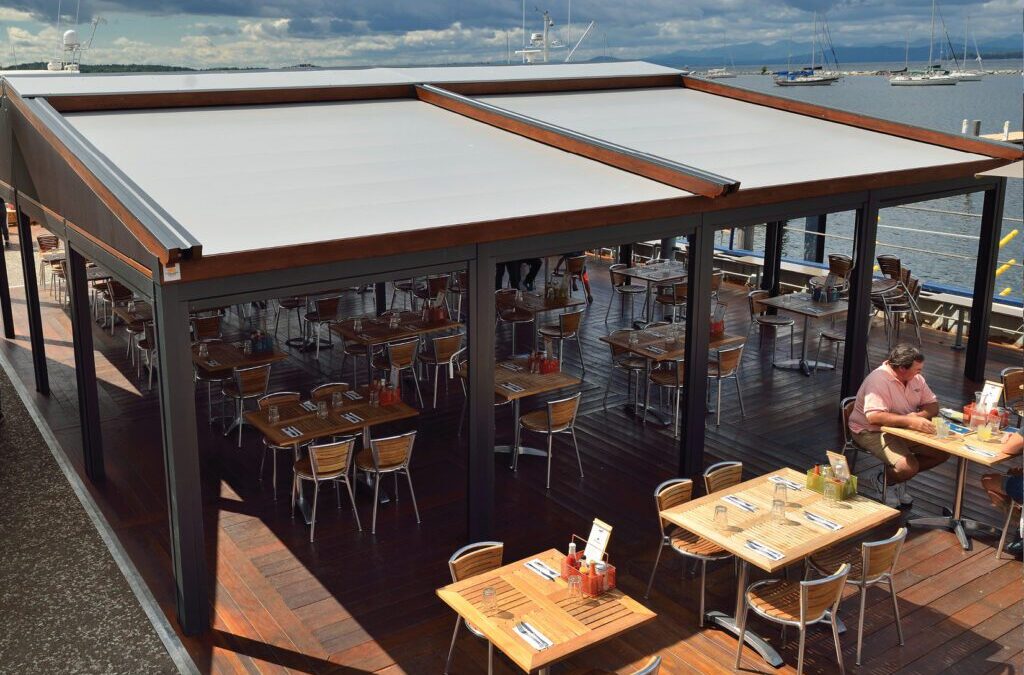In a typical building, the glass entry doors and any adjacent windows create more opportunities for unwanted energy loss (in winter) and gain (in summer) than any other structural element.
During the summer, for example, a single square foot of unshaded glass can allow more energy into a building than an 8′ x 10′ insulated wall.
That’s a big reason why designers and business and building-owners are looking more frequently toward adding new entry awnings, canopies, pergolas and screens at key traffic and visibility locations.
Once installed, high-quality awnings help limit the location’s energy gain and loss every day and night and do this during their considerable service lifetime. As a result, their benefits work out to be extremely cost-effective. Even better, well-designed and fabricated solar protection products create these energy savings in attractive, visually striking ways that help a building or business make distinctive, memorable impressions on every passerby.
A study conducted at the University of Minnesota Center for Sustainable Research found that awnings likely contribute in big ways to a structure’s environmental sustainability. Awnings’ advantages include:
- Reducing the penetration of harmful ultraviolet rays from the sun into the occupied areas adjacent to doors and windows.
- Reducing direct solar heat gain in summer and limiting heat loss in winter.
- Reducing the need to burn fossil fuels for heating and cooling, thus lowering a building’s year-round carbon footprint.
- Reducing overall electricity demand, thus limiting the local utility’s need for building, installing, and maintaining power generation equipment and infrastructure.
- Reducing the build-up of snow and ice which can block people’s entry and exit in winter.
Properly designed, entry and other awnings produce these benefits without compromising anyone’s ability to see what’s on the other side of the windows and/or glass entry doors.
In short, awnings have a great many “up” sides, but without any associated “down” sides.

